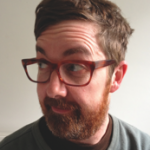
Tim O’Riley
Royal College of Art
tim.oriley@rca.ac.uk
www.timoriley.net
Biography
Tim O’Riley was born in Britain in 1965. He lives in London where he works both as an artist and a tutor at the Royal College of Art. He is variously interested in science, the limits of knowledge, curiosity and dialogue as spurs for thinking and generating artworks. O’Riley has exhibited work at venues including the Walker Art Gallery, Liverpool; PS1, New York; Fundação Calouste Gulbenkian, Lisbon; and the Centre d’Art Contemporain, Geneva. He is currently working on a bookwork, Twenty-Seven Kilometres, based on photographs of the Large Hadron Collider at CERN, Geneva to be published by Revolver in 2013.
Illustrated Talk
Exactitude and Uncertainty
The talk centres around an artist’s book based on research at CERN near Geneva, which the author first visited in late-1999 and most recently in 2008. CERN is a vast project that brings together scientists, technicians, engineers etc from many countries. Its centrepiece—the Large Hadron Collider (LHC)—is a 27-kilometre particle accelerator installed 100 metres beneath the land between the Alps and the Jura mountains. One of the LHC’s goals is to search for the Higgs boson, a fundamental particle giving mass to all other particles that is crucial to the coherence of the Standard Model, physicists’ current theory for the constitution of matter at a fundamental level. CERN was recently in the news for its probable discovery of the Higgs particle. The bookwork that forms the focus for the talk reflects on ‘scientific endeavour’ in a broad sense, and how the immensity of nature—and human theories of it—are squared with more everyday concerns. Although text is used to situate the relevant ideas, the book is primarily visual, using photographs from a pre-Higgs visit made in 2008. Subjective response and reflection are fundamental to how one makes sense of the world and these form strategies for assimilating and using the material generated. Borges’ brief short story, “On Exactitude in Science”, has proved a key reference point, as do some of Vilém Flusser’s writings on language and the ‘technical image’. One of the book’s aims is to explore—from the viewpoint of a non-scientific artist—the human dimension to science and its status as both an ideal realm and a tangible practice. Perhaps above all, the intention is to look for those transient, poignant and often-humorous responses that people have to the ‘machine’ and its make up.
